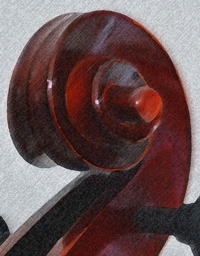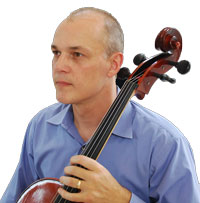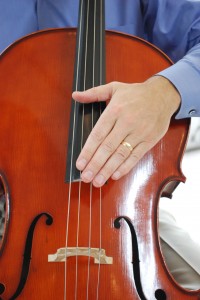Crude stringed instruments started being played in Europe around the 9th century. The first distinct types to rise up were the lyre and harp, and then by the 12th century the “fiddle” or violin had become quite popular. At that time violins were either held in the arms or placed between the legs. The cello came into popular use starting in the 16th century in Italy, and basically looks like a violin’s large older brother. Conductors and composers were looking for lower tones than a regular violin could produce. What started out as the “violoncello” was soon shortened to what we call the instrument today. Composers started writing cello parts that audiences loved, and royal families also enjoyed the instrument enough to request concerts including the instrument. The cello was used in Bach’s Baroque works , and in popular quartets and sonatas. The instruments would catch on later for soloists. In time the cello would lead to the evolution of the double bass, an instrument with even lower tones than the cello.
The Form of the Cello
Cellos appear to be huge violins, and indeed cellos are stringed instruments in the same family as the violin. The person who plays a cello is called a cellist, and he must sit in a chair and balance the cello on a spike between the legs and lean the instrument against his shoulder. The cellist moves a bow across the strings to produce deep, resounding tones. The best cellos are made of quality woods and are hand-carved. Cellos are also specially formed to resist cracking in the body of the instrument. Cracks must be avoided at all costs in order to preserve the integrity of the instrument’s beautiful sounds. The design of the cello has changed since its inception to make the instrument easier for people to play. The height and width of the cello increased, balancing out the weight more. Also, an end pin was added for a sturdy positioning of the instrument.
The Appeal of the Cello
The cello quickly fell into favor with audiences and composers alike for the sounds the instrument could produce. Players could gain much attention and acclaim by mastering the cello and performing in front of audiences. The cello works by famous composers such as Beethoven and Bach spread the appeal of the instrument far and wide.
Cello Uses throughout the centuries
Ccellos have been used as part of orchestras and symphonies, and for quartets and then solo pieces as well. Now there are even cellos available in electric forms for more modern rock or pop music. Modern bands such as Rasputina use the cello to emphasize dark, gothic tones in their original music. Cellos have been used in the past by famous bands such as The Beatles and Pink Floyd. Cellos are also featured prominently in some jazz and neoclassical albums as well. Cellos can even be heard in bluegrass and folk music. Throughout the centuries the cello has evolved and proved its lasting appeal through its sustained popularity and versatility as a beautiful-sounding instrument and a vital part of any orchestra.





